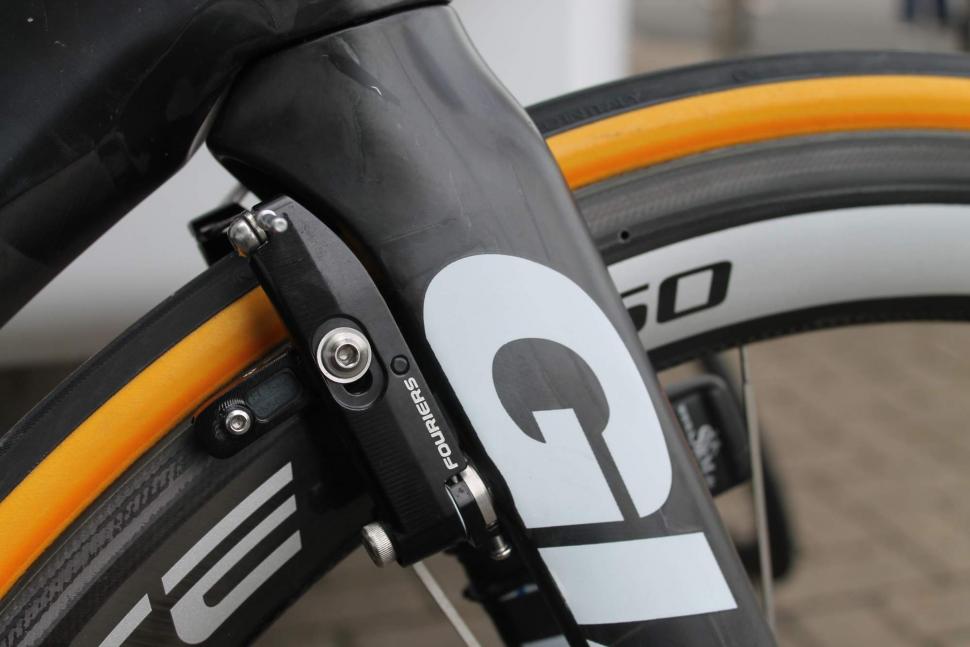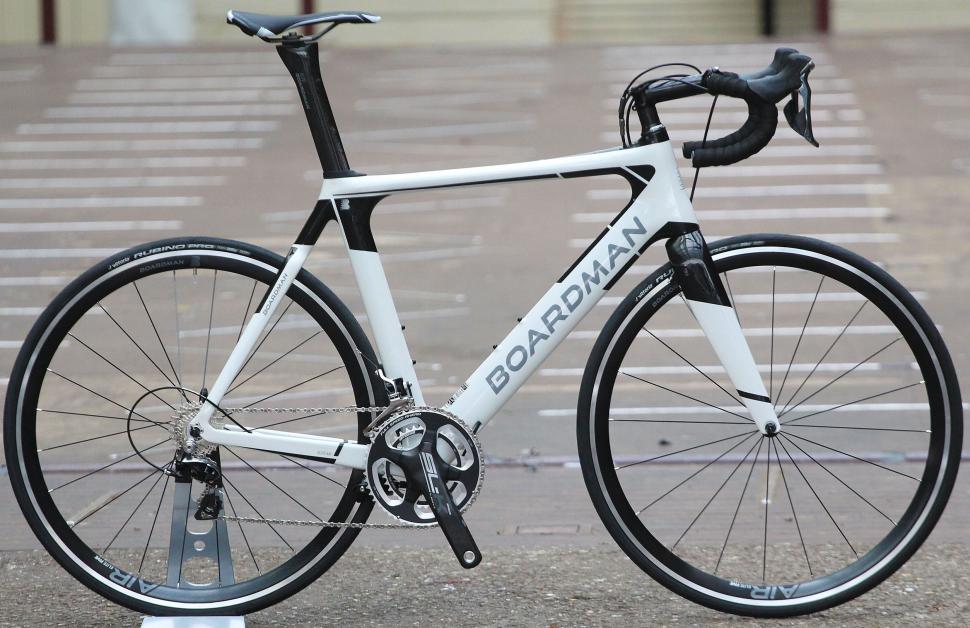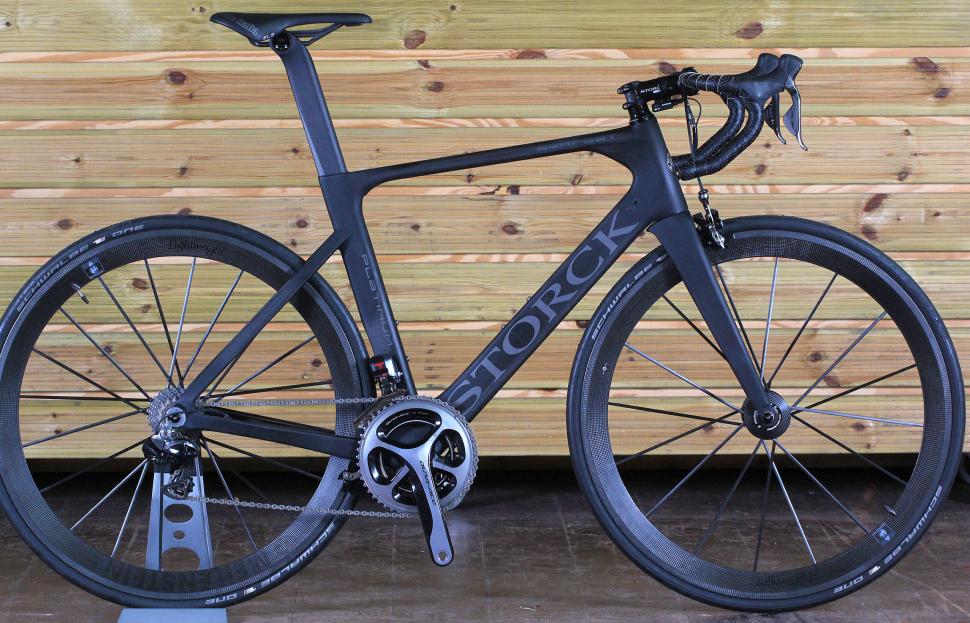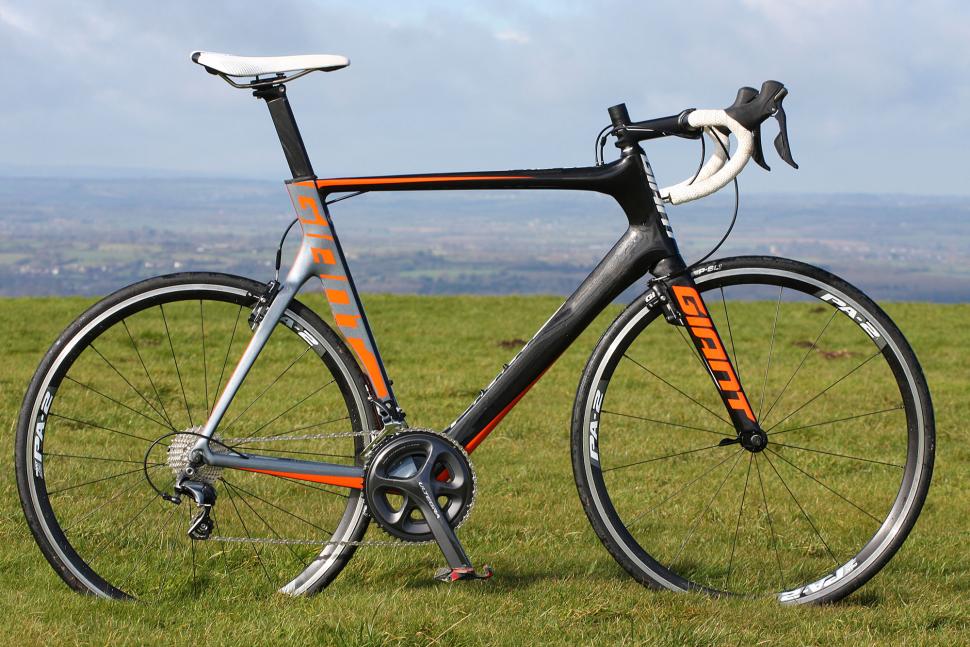In just a few years aero road bikes have gone from The Next Big Thing to a mainstream bike option. The latest models have been tweaked to be faster than ever, according to the manufacturers, and to alleviate the harsh ride that characterised some early aero bikes.
Aero road bikes essentially draw the aerodynamic features from time trial bikes into a road frame, and balance the demands of weight and stiffness into a package that, on paper, looks to be the ideal all-round choice.

At any decent speed, most of your effort goes into overcoming air resistance, so reducing a bike's drag means you'll go faster, or ride at any given speed with a lower power output. Who doesn't like the sound of that?
Most of your air resistance comes from your body. Wearing non-flappy clothing will help, as will losing weight. But the 20% or so of air resistance from your bike is enough for engineers and designers to focus on making road frames and products more slippery in the air. In the pro peloton aero road bikes have been quickly adopted, where the margins of victory are very slim and there has been a focus on gaining ever smaller performance gains over the years.
Weight, and the lack thereof, used to be the main driving force of frame development. Along with stiffness, these were the two cornerstones of bike design. These days most bikes are light, many well below the UCI’s 6.8kg weight limit (which doesn’t affect non-racers anyway), and come with more stiffness than is sometimes comfortable.
All that has made aerodynamics more important for manufacturers. Specialized has built its own wind tunnel, for example, and most manufacturers are testing in wind tunnels. Nevertheless, aero road bikes haven't converged on a perfect, slippery common shape. Different engineers prioritise different ways of improving aerodynamics but there are shared design trends: skinny, aerofoil-shaped tubes, integrated brakes, and internal cable routing.
Let's take a look at the latest aero offerings.
Merida Reacto 5000 — £2,000
The Merida Reacto 5000 is an aero road bike that combines plenty of speed with agile handling and a respectable amount of comfort. If you have £2,000 to spend on a race bike, it deserves your serious consideration.
It is, in a word, quick. The Reacto 5000 is at its best on flat and rolling roads when you just want to get your head down and do some hard work. Slam it into a big gear, wind up the speed, and you bowl along beautifully.
Rear our review of the Merida Reacto 5000
Merida Scultura 6000 — £2,300.00
The Merida Scultura 6000 just feels right when you get on it. The position, the ride, the comfort… it's one of those bikes that gives you the confidence to push it as hard as you want, knowing that it isn't going to bite back. It's a bit of a bargain too when you consider the frame is being ridden in the pro peloton and weighs a claimed 750g. It's a hell of a lot of bike for the money.
For this revised version of the Scultura frameset Merida has concentrated on increasing comfort, and it's obviously paid off. The frame is handmade in Taiwan, and by tweaking the carbon layup in certain areas it has been able to bring in quite a bit of extra damping without sacrificing stiffness.
Aerodynamics was another target for Merida, using computational fluid dynamics in the design process and wind tunnel testing of various incarnations. It even used a dummy with moving legs to replicate the effect the rider's pedalling has on wind resistance.
Read our review of the Merida Scultura 6000
Boardman Elite Air 9.2 — £2,799.99
Boardman's Elite Air 9.2 is just the ticket if you're looking for a fast bike with a good spec but you haven't got very silly money. It's a good package and the performance is impressive straight out of the box.
If you're buying an aero bike, chances are you're doing so because you want to go faster; that, or you just like the look of deep-section tubes.
Do you go faster? The anecdotal evidence suggests a yes: you go faster on this than on standard road bike. Our tester grabbed a downhill KOM on Strava, hung on longer before getting blown out the back of a crit with riders a grade above him and added 10km/h to his top speed on a favourite descent.crit with riders a grade above him and added 10km/h to his top speed on a favourite descent.
Read our review of the Boardman Elite Air 9.2
Storck Aerfast Platinum — £10,949
At £10,949, the Storck Aerfast Platinum is a massive outlay, but boy, oh boy do you get one hell of a return on your investment. It's a sub-6.5kg race weapon, with aerodynamics that work in the real world, and it offers comfort levels to challenge most endurance bikes.
Taking plenty of things it's learnt from its astonishingly good Aernario, Storck has pushed the design even further down the aerodynamics route, and what it has created in the Aerfast is a bike that's not only unbelievably fast, but light and stiff too.
If you're in the market for an aero bike, speed is going to be topping your list of priorities, and it's where the Aerfast truly excels. Below about 23mph the Storck feels like any other bike to ride, any other superlight bike that is, but all the same it feels like it requires some effort; you've got to work at it.
Get above that speed, though, and the aerodynamics really come into play. It feels like a permanent tailwind is nudging you along, a friendly hand on your back as you watch the numbers climb on the Garmin – with no more effort required than there was 5mph ago. It's a wonderful feeling, and one you never tire of.
Read our review of the Storck Aerfast Platinum
Cervelo S5 — £ 3,999
Long hailed as the fastest aero road bike by people who know a lot about aerodynamics, the Cervelo S5 has received quite a makeover this year. It still looks like an S5 but Cervelo claims to have finessed every tube profile and found significant drag reductions. It’s also increased frame stiffness in the head tube and bottom bracket to improve handling. Another change is the shorter head tube to put the rider in a lower, and more aerodynamic, position. Cervelo has also developed its own aero handlebar which is compatible with a regular stem.
Read our coverage of the Cervelo S5 launch
Find a Cervelo dealer
Ridley Noah SL — £5,399.99
The Noah FAST packs a lot of innovative aero technology, including slotted forks and seat stays, integrated v-brakes and small ridges on the leading edges of the frame surfaces to smooth airflow. It’s still available, but the Belgian company has released the new Noah SL which is lighter than the previous Noah with a 950g claimed frame weight. It still features the innovative F-Splitfork, but there’s no slotted rear stays and the raised ridges have been incorporated into the tube shapes. The integrated brakes are gone, in their place regular caliper brakes in front of the fork and at the seat stay.
Read about Greg Henderson's Ridley Noah SL
Find a Ridley dealer
Pinarello Dogma F8 — £ 3,899 (frameset)
Developed in collaboration with Team Sky and Jaguar, the Dogma F8 is the first aero road bike from Pinarello, and it’s just won the 2015 Tour de France, though we reckon Chris Froome could have won on any bike. The F8 uses FlatBack tube profiles, a Kamm Tail sort of shape, with a rounded leading edge and chopped tail. Pinnarello has also lowered the seat tube water bottle cage and it’s further shielded by the down tube. Meanwhile, up front the fork has been derived from the company’s Bollide time trial bike with an aerodynamic shape, and the crown closely nestles into a recess in the down tube.
Canyon Aeroad CF SLX — £6,699

The second-generation Aeroad CF SLX has been inspired by the work on its futuristic Speedmax time trial bike, with razor sharp aero tube profiles and an optional one-piece handlebar and stem assembly. Much of the company’s focus with the new bike has been in reducing the frontal surface area, so along with the new handlebar there’s a narrower and hour-glass shaped head tube to help reduce drag. Other changes include the new tube profile, a variant of the Trident shape used on the Speedmax, and a seat tube that hugs the curvature of the rear wheel. Unlike some aero road bikes that integrate the brake callipers, Canyon has opted for direct-mount Shimano brakes in the regular positions.Shimano brakes in the regular positions.
Read our review of the Canyon Aeroad CF SLX 70 Di2
Specialized Venge Vias — £6,499.99
Out with the old Venge, in with the new Venge Vias. The Venge has had a radical makeover, with an all-new aero frame with the most interesting integrated brakes we’ve ever seen. Manufacturers have been integrating brakes into the frame in an effort to reduce drag, but the Specialized approach, with custom designed brake calipers, is claimed to produce zero drag. Elsewhere, a new aero handlebar and stem provides full internal cable routing, there are almost no visible cables on this bike, a further measure to reduce drag.
Read about Mark Cavendish's Venge at the Tour de France
Find a Specialized dealer
Scott Foil — from £2,299
The Foil arguably kicked off the whole aero road bike trend, bringing aerodynamic design that was once the preserve of time trial bikes to regular road bikes. This update has been a long time coming but it’s evolution, not revolution that is the news here. Changes to the front-end see the down tube lowered and wrapped around the fork crown, and a smaller rear triangle and new internal seat clamp in the top tube. The rear brake is also positioned underneath the chain stays.
Read our coverage of the 2016 Scott Foil launch
Find a Scott dealer
Trek Madone — from £4,499.99
Once an all-round lightweight race bike, the Madone has been given a complete aerodynamic makeover this year. It features a version of the Isospeed decoupler borrowed from the Domane to provide some comfort (aero road bikes have traditionally compromised comfort in the quest for speed) and it’s wrapped up in a frame with Kamm Tail shaped tubes. Like Specialized, Trek has also developed its own brake callipers, and they’re concealed within the fork and seat stays. To keep the cable routing of the centre pull front brake nice and clean, the head tube features flaps that open and close when the fork is turned.
Read our coverage of the 2016 Trek Madone launch
Find a Trek dealer
Merida Reacto — from £749.99
Merida’s Reacto features tube profiles shape in accordance with NACA airfoil principles, and using the popular Kamm tail approach of chopping off the trailing edge, tricking the air into acting as if the trailing edge were there. More than any other bike here, the Reacto looks like a time trail in drag. There’s an aero seat post, internal cable routing and the rear brake is positioned underneath the chain stays. The front brake, meanwhile, is found on the front of the fork.
Read our review of the Merida Reacto 300
Find a Merida dealer
Canyon Ultimate CF SLX — from £2.699
Canyon has given its latest Ultimate CF SLX a light touch of aerodynamic influence. It has developed a new D-shaped down tube, seat tube and seatpost, which along with a new internal seat clamp, adds up to a claimed 10% reduction in drag compared to the previous non-aero Ultimate. It doesn’t challenge Canyon’s Aeroad CF SLX for outright slipperiness in the wind tunnel, but does point to a future where all road bikes might one day be shaped in the wind tunnel.
BMC TimeMachine TMR01 — from £2,099
Launched in 2013, the TimeMachine grew out of the understanding of aerodynamics BMC derived from its TM01 time trial bike project. It uses a truncated wing profile (not unlike a Kamm tail) for the main sections of the frame. To reduce the air turbulence over the frame members BMC puts a smooth groove at the leading edge of forward facing sections, called a Tripwire. This delays flow separation and keeps the air attached for as long as possible, minimising drag — in essence it's doing the same job as the dimples on a golf ball.
Read our coverage of the BMC TimeMachine launch
Find a BMC dealer
Giant Propel Advanced — from £1,299
The Propel Advanced SL 3 was Giant's bold entry into the aero road bike fray and gave rise to a whole range of highly-regarded Propel bikes.
Key to the frame is the AeroSystem Shaping technology that is the result of Computational Fluid Dynamics (CFD) research and wind-tunnel tests. Every tube has been carefully shaped, with a teardrop shape in evidence wherever you look. Interestingly, the down tube has been shaped with a water bottle in mind. It’s flattened where the water bottle normally protrudes from the sides of a conventional down tube.
Read our review of the Giant Propel Advanced 1
Read our coverage of the original Giant Propel launch
Find a Giant dealer














